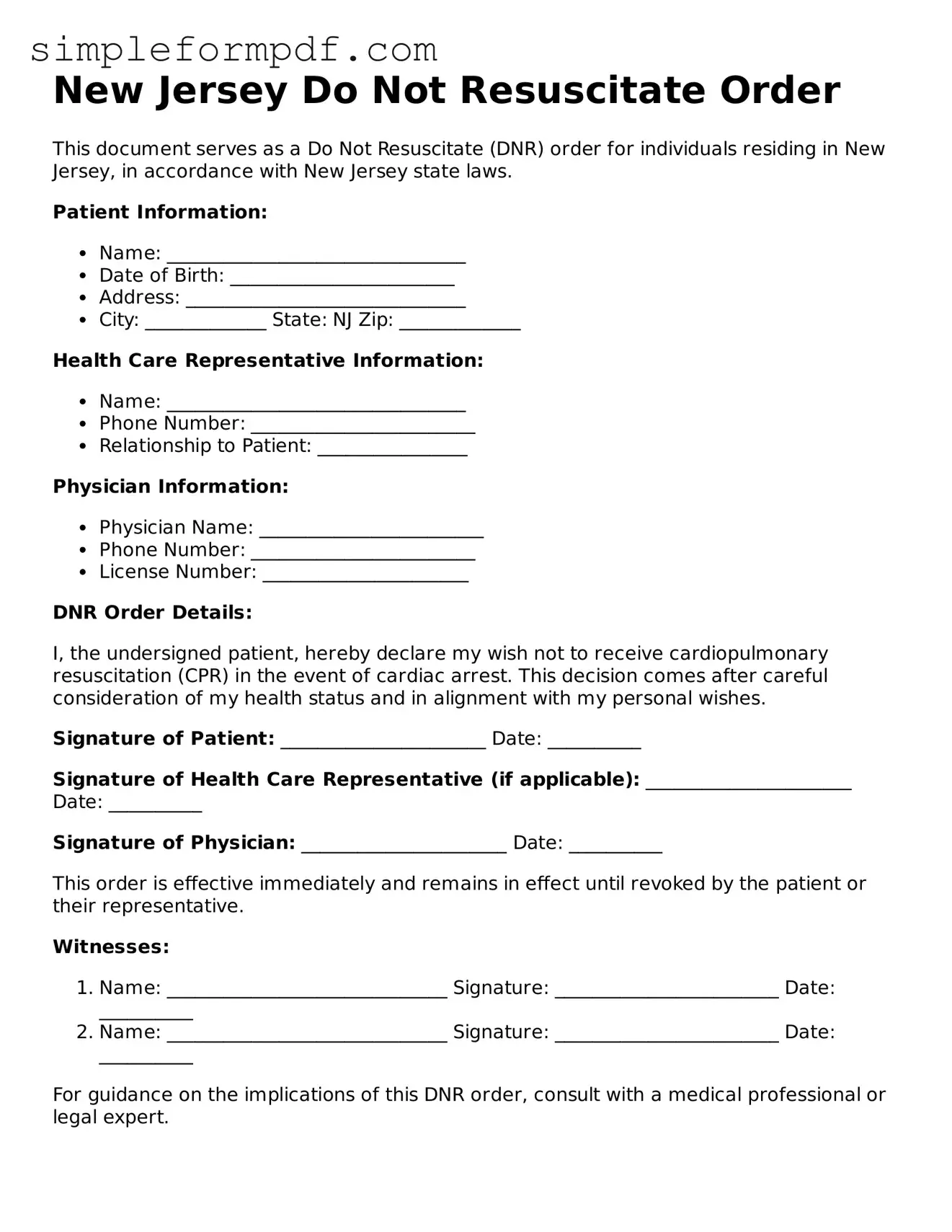New Jersey Do Not Resuscitate Order
This document serves as a Do Not Resuscitate (DNR) order for individuals residing in New Jersey, in accordance with New Jersey state laws.
Patient Information:
- Name: ________________________________
- Date of Birth: ________________________
- Address: ______________________________
- City: _____________ State: NJ Zip: _____________
Health Care Representative Information:
- Name: ________________________________
- Phone Number: ________________________
- Relationship to Patient: ________________
Physician Information:
- Physician Name: ________________________
- Phone Number: ________________________
- License Number: ______________________
DNR Order Details:
I, the undersigned patient, hereby declare my wish not to receive cardiopulmonary resuscitation (CPR) in the event of cardiac arrest. This decision comes after careful consideration of my health status and in alignment with my personal wishes.
Signature of Patient: ______________________ Date: __________
Signature of Health Care Representative (if applicable): ______________________ Date: __________
Signature of Physician: ______________________ Date: __________
This order is effective immediately and remains in effect until revoked by the patient or their representative.
Witnesses:
- Name: ______________________________ Signature: ________________________ Date: __________
- Name: ______________________________ Signature: ________________________ Date: __________
For guidance on the implications of this DNR order, consult with a medical professional or legal expert.
Keep this document in a safe place and share copies with your health care providers and family members.
